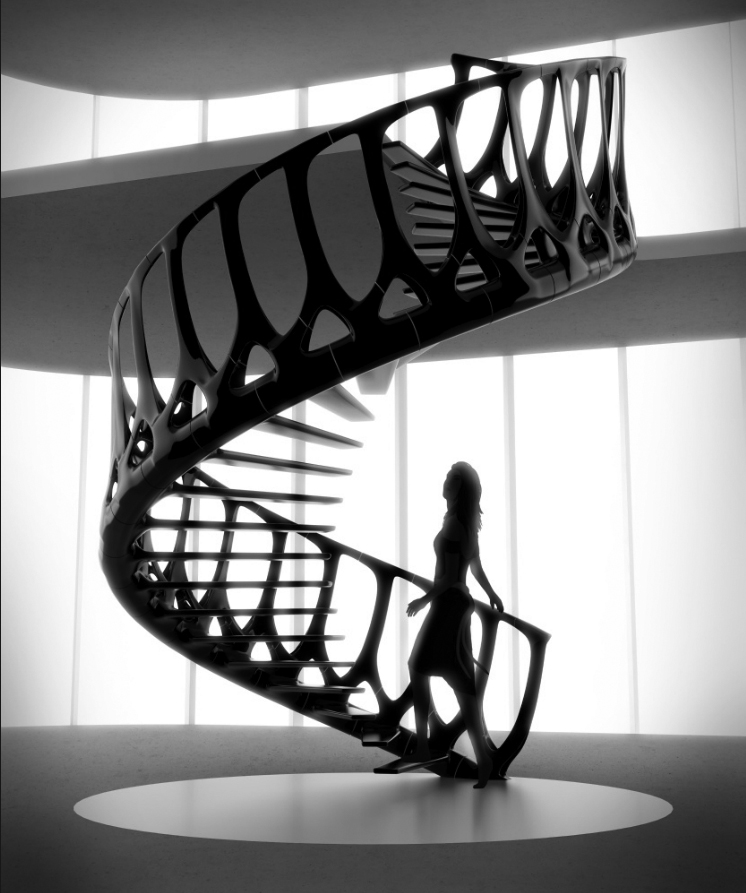The Vertebrae Staircase was inspired by the spine of a whale and its design goes beyond being categorized as biomorphic where form is merely geometrically copied. The project explores the shaping and forming of a single vertebrae whose form was heavily influenced by structural performance, repetition, and modular connectivity. Andrew McConnell explains, “Much of the design work went into refining the single component, or vertebra, that mate with each other creating a unified spine running from floor plate to floor plate. These interlocking vertebrae create a rigid and self-supporting structure”. The beauty of the design can be attributed to its repetitive pattern and intricately refined geometry that can be assembled and fabricated with relative ease. Since the staircase consists of 22 identical modules and only two unique end modules only three master molds could theoretically yield the entire project. Though the fabrication of one master mold may be complex the ability to reuse form-work is quite powerful from a cost and material efficiency stand point.
The outer surface is composed of multiple layers of a durable composite fibre material while inside are the key structural elements. The vertebrae are mated using steel fittings and locked together with steel pins. When all the connections are made, continuous structural spirals run through every vertebra at the hand rail and beside each step, reinforced by structural foam and a network of steel rods.




